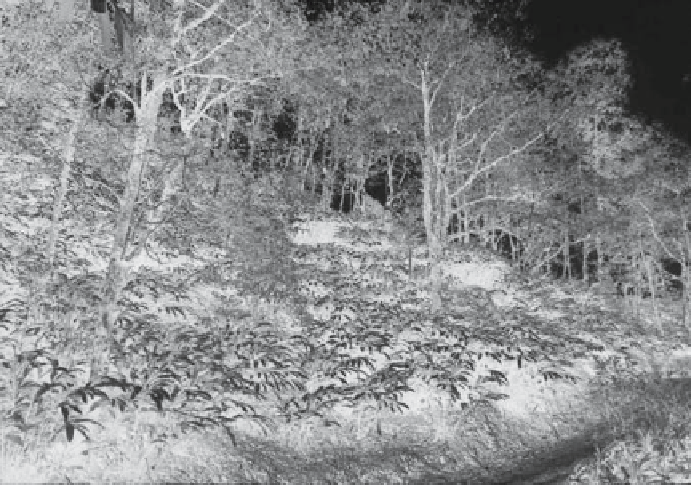Agriculture Reference
In-Depth Information
Photo 18.2
Alder cardamom agroforestry in Sikkim, Eastern Himalayas (©E Sharma)
Cardamom is a shade-loving crop, grown under forest cover. Himalayan alder
(
Alnus nepalensis
D. Don) is the most common species used as a shade tree in carda-
mom farming (Photo 18.2). Himalayan alder, henceforth called alder, regenerates
naturally on landslide affected, freshly exposed and degraded sites. It is grown in for-
estry, agroforestry like cardamom, shifting cultivation in northeast India, and as a
nurse tree in
Cinchona
(medicinal plant) plantations. Alder is a useful associate tree
capable of fixing nitrogen efficiently with
Frankia
symbiosis (Sharma and Ambasht
1984). The altitudinal range of the Himalayan alder is sympatric with the agro-cli-
matic range of large cardamom farming. It provides fuel-wood for both cardamom-
curing and domestic use. Trees attaining more than 25 to 30 years of age provide timber
for either domestic or commercial purposes. The majority of the 30,039 ha area under
cardamom cultivation in Sikkim and Darjeeling have alder as the shade tree.
In this chapter, cardamom-based agroforestry systems in an age series of 5, 10,
15, 20, 30 and 40 year old stands will be discussed. In addition, both systems with
N
2
-fixing alder (alder-cardamom) and systems without alder (forest-cardamom)
will be looked at and described.
18.3 EcosystemServices
The cultivation of agricultural crops with trees in the form of an agroforestry
system results in a variety of food and tree-based products (Sharma and Sharma
1997). In addition, when practised in mountainous areas, it provides communities

Search WWH ::

Custom Search